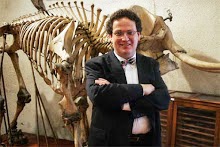 Cybertaxonomy is entering an exciting new phase in its evolution. The early steps that have led to cybertaxonomy began with databasing in the 1980s. The focus now as then has largely been on digitizing existing taxonomic information and making it accessible via the Internet. Such digitial data access is extremely important, indeed essential, yet is merely the beginning. A negative consequence is that this emphasis on mobilizing existing information gives to some a false impression that taxonomic knowledge is static and, once created, simply needs to be moved around and made accessible through convenient portals. Taxonomy, of course, is a hypothesis-based science and unless hypotheses about characters, homologies, synapomorphies, species, and clades are continually tested by all and the latest evidence, then the value of that knowledge is diminished and it becomes less of a reflection of the natural world and mere historical artifacts.
Cybertaxonomy is entering an exciting new phase in its evolution. The early steps that have led to cybertaxonomy began with databasing in the 1980s. The focus now as then has largely been on digitizing existing taxonomic information and making it accessible via the Internet. Such digitial data access is extremely important, indeed essential, yet is merely the beginning. A negative consequence is that this emphasis on mobilizing existing information gives to some a false impression that taxonomic knowledge is static and, once created, simply needs to be moved around and made accessible through convenient portals. Taxonomy, of course, is a hypothesis-based science and unless hypotheses about characters, homologies, synapomorphies, species, and clades are continually tested by all and the latest evidence, then the value of that knowledge is diminished and it becomes less of a reflection of the natural world and mere historical artifacts.
We have entered the second phase in the evolution of cybertaxonomy that is characterized by a focus on meeting the needs of taxonomists to create new taxonomic knowledge and test and verify (or correct or replace) existing knowledge of characters, species, and clades. This will be a period of unprecedented discovery, when most of the 12 million living species of plants and animals are described and when a cyber-enabled research environment is built that will allow taxonomists to work more efficiently than ever before. The challenge will be to retain the best of the past 250 years of theory and practice while accelerating where possible --- without sacrifice of the quality and integrity of the research --- to make taxonomy as efficient and cost effective as possible. Assuming that we succeed in investing in taxonomy to increase discovery and description of species by an order of magnitude, the bulk of this major push for discovery can be completed by 2058--- the 300th anniversary of Systema naturae (10th ed.).
Cybertaxonomy would then move into a steady state of continual testing of characters, species, and clades and refining the ease and flexibility of accessing, synthesizing, aggregating, and using taxonomic information for many diverse purposes.



No comments:
Post a Comment